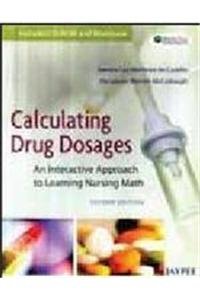Only logged in customers who have purchased this product may leave a review.
Sale!
Wealth From Waste (Hardcover) | Released: 2007
By: S.C. Bhatia (Author) Publisher: Atlantic33.00% Off Original price was: ₹2,390.00.₹1,601.00Current price is: ₹1,601.00.
You save ₹789.00
Waste has always been associated with human activity and is a necessary evil in any developmental process. Today, the sheer quantity and diversity of wastes generated by industries and municipalities pose serious risks to both human health and the environment. The situation is particularly bad in developing countries such as... Read More
In stock
Ships within 1-2 Business Days

100% Orginal Books

Easy Replacement

Certified product

Secure Checkout

On time delivery
About The Book
Waste has always been associated with human activity and is a necessary evil in any developmental process. Today, the sheer quantity and diversity of wastes generated by industries and municipalities pose serious risks to both human health and the environment. The situation is particularly bad in developing countries such as India mainly due to their inefficient technologies, ineffectual policies and insensitivity on the part of the industrial sector. It is imperative therefore to create awareness among entrepreneurs, manufacturers, local authorities etc. of the varied technologies evolved to treat and recycle wastes and convert it to wealth.
The present book is an attempt to put together the various options available to meet the twin goals of environmental conservation and sustainable development. It highlights the recent innovations, research and development ideas, waste recycling, waste treatment, waste disposal, waste utilization and such pollution control measures that includes the area of non-conventional energy, agriculture, food processing, chemical, industrial, medical and automobile waste technology. The book provides an in-depth study of the four main principles of waste minimization and cleaner productionreduction at source, recycling, product reformulation, and modification and packaging.
The main aim of the book is to bring to light the various ways of converting waste to wealth. It suggests to obtain paper, paper board and furfural from agricultural waste; feedstuffs and fertilizer from wastes produced by fermentation industries; manures and biofertilisers from municipal solid waste and bioenergy from industrial waste. In addition, it emphasizes the utilization of carbon black from rubber wastes, flyash as an alternative building materials, industrial wastes for control of fire in coal mines, sewage in fish culture, to mention a few. The text throughout is supplemented with diagrams and tables which would facilitate quick grasping of the concepts. While references included herein will enable the readers to pursue study further, Index will help in quick and easy reference.
The book is of reference value and is intended for practising engineers chemical, mechanical, civil, agriculture mining and metallurgical; food, rubber and plastic technologist; entrepreneurs; consultants; financial institutions; researchers; and voluntary agencies. Besides, it will prove equally useful to environmentalist, development practitioners, waste management experts, health workers, doctors, social scientists, policy makers, local authorities and even general readers as it deals with a wide array of waste to wealth.Table of Contents: Volume 1
SECTION IAgricultural Waste
1. Vermicompost: An Organic Manure
2. Wood and Bark Wastes as Feedstuffs and Fertilisers
3. Utilisation of Coconut Shell Powder into Industrial Products
4. Utilisation of Biomass
5. Enzyme Pectinase from Agricultural Waste and Ceramic from Rice Husk
6. Paper, Paper Board and Furfural from Agricultural Waste
SECTION IIFood Processing Waste
7. Fruits, Vegetables, Plantation and Forest Products
8. Animal and Poultry Products
9. Coffee and Tea Wastes
10. Cereals, Pulses and Oil Seeds
11. Wastes from the Fermentation Industries and Their Use as Feedstuffs and Fertilisers
12. Dairy Industry
SECTION IIIWaste from Chemical Processing and Allied Industries
13. Petroleum Refinery and Petrochemicals
14. Sugar and Distillery
15. Leather and Tannery
16. Pesticides
17. Paper Industry
18. Paint and Dye Industry
19. Fertiliser Industry
20. Pharmaceutical Industry
21. Re-Refining of Used Lubrication Oil
22. Reconditioning and Reclamation of Transformer (Insulating) Oil
23. Control of Gaseous Wastes and Odours
24. Recycling and Purification of Solvents for the Laboratory
25. Liquid Chemical and Chlorinated Waste Treatment
26. Waste Minimisation in Textile Industry
References
Index
Volume 2
SECTION IRubber and Plastic Waste
1. Basic Concepts of Recycling Polymers
2. Recycling of Miscellaneous Polymers
3. Feed Stocks from Plastics Wastes
4. Recycling Technologies for Common Plastics
5. Recycling of Rubber Tyres and Polyethylene Terephthalate
6. Rubber Waste Disposal and Recovery of Carbon Black
7. Reclaimed Rubber
SECTION IIWaste from Thermal Power Stations 3-223
8. Flyash Utilisation: Status and Issues
9. Flyash: A Source of Alternative Building Materials
10. Mass Scale Utilisation of Flyash
SECTION IIIMetallurgical and Mining Waste
11. Processing of Chemical, Mining and Metallurgical Industries Waste: An Overview
12. Management of Solid Wastes of Mining, Mineral Processing and Metallurgical Industries
13. Steel Plant Solid Waste: A Source of Wealth
14. Utilisation of Alumina Plant Wastes
15. Wastes Utilisation of Some Mineral Industries
16. Utilisation of Zirconium Alloy Scrap and Metal Waste
17. Recovery of Metal Values from Some Industrial and Laboratory Wastes
18. Waste Treatment of Cyanide Plating and Tin Slag
19. Utilisation of Industrial Wastes for Control of Fire in Coal Mines
20. Case Studies
SECTION IVWaste Control in Electronic and Computer Industry
21. Waste Control in Electronic Industry
22. Computer and Email Waste
SECTION VRecycling and Disposal of Waste-Water and Solid Wastes
23. Adsorption Technique and Pulsed Power for Waste-Water Treatment
24. Manure and Biofertiliser from Municipal Solid Waste
25. Recycling of Sewage for Use in Fish Culture and Cyclic Activated Sludge Technology
SECTION VIRole of Biotechnology and Bioenergy in Waste Minimisation
26. Waste Minimisation Through Biotechnology
27. Typical Methods of Utilising Cellulose and Industrial Waste
28. Bioenergy from Industrial Wastes
References
Index








Reviews
There are no reviews yet.